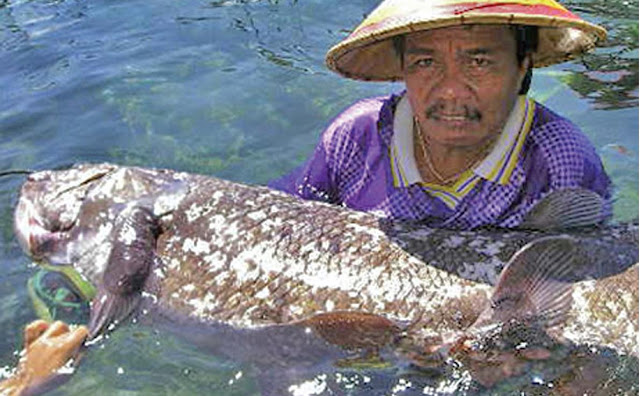Beauty Of Animal | Coelacanth | More closely related to tetrapods than stingrays, fish is considered to be transitional species between fish and tetrapods until the first Latimeria specimen was found off the east coast of South Africa, from River Chalumna (now Tyolomnqa) in 1938. Museum curator Marjorie Courtenay-Latimer discovered the fish among the catch of a local fisherman, Captain Hendrick Goosen, on December 23, 1938. A local chemistry professor, JLB Smith, confirmed the importance of fish to the famous cable: "MOST IMPORTANT PRESERVE SKELETON AND GILLS = FISH DESCRIBED"
As a food fish the coelacanth is almost worthless, as a network that delivers oil emits rotten meat taste. Coelacanth survival continues to be threatened by sea commercial trawling. Fish is part of a sea king Sarcopterygii clade, or lobe-finned fish. Externally, there are several characteristics that distinguish from other coelacanth lobe-finned fish. They have a three-lobed tail fin, also called flippers trilobate. A secondary tail that extends past the line and main tail separates the top and bottom of the coelacanth. Cosmoid scale acts as a thick armor that protects the outside of the coelacanth. There are also some internal characteristic that helps in differentiating from another coelacanth lobe-finned fish.
Formed the core of the coelacanth is different from most modern fish, the heart chambers arranged in a straight tube. The coelacanth braincase is 98.5% filled with fat, only 1.5% of the braincase containing brain tissue. Cheek of the coelacanth is unique because very small opercular bone and soft tissue flap holds the opercular. Coelacanth also contains a unique rostral organ in the ethmoid region of the braincase. Also unique to the coelacanth is still there, is the "lungs fat" or fat full single-lobed lung vestigial Sea king fish usually caught when a local fisherman fishing for Oilfish.
Fishermen will sometimes rip Coelacanth is not a Oilfish because they traditionally fish in the evening when Oilfish (and coelacanth) are eaten. Before scientists became interested in coelacanths, they are thrown back into the water if caught. Before the 1980's, this is a problem for coelacanth population. In the 1980s, international aid gave fiberglass boats for local fishermen and fishing out of the area resulted in a more productive Coelacanth fish waters.
Find Here The Kinds Of Animals and Flora and Fauna













